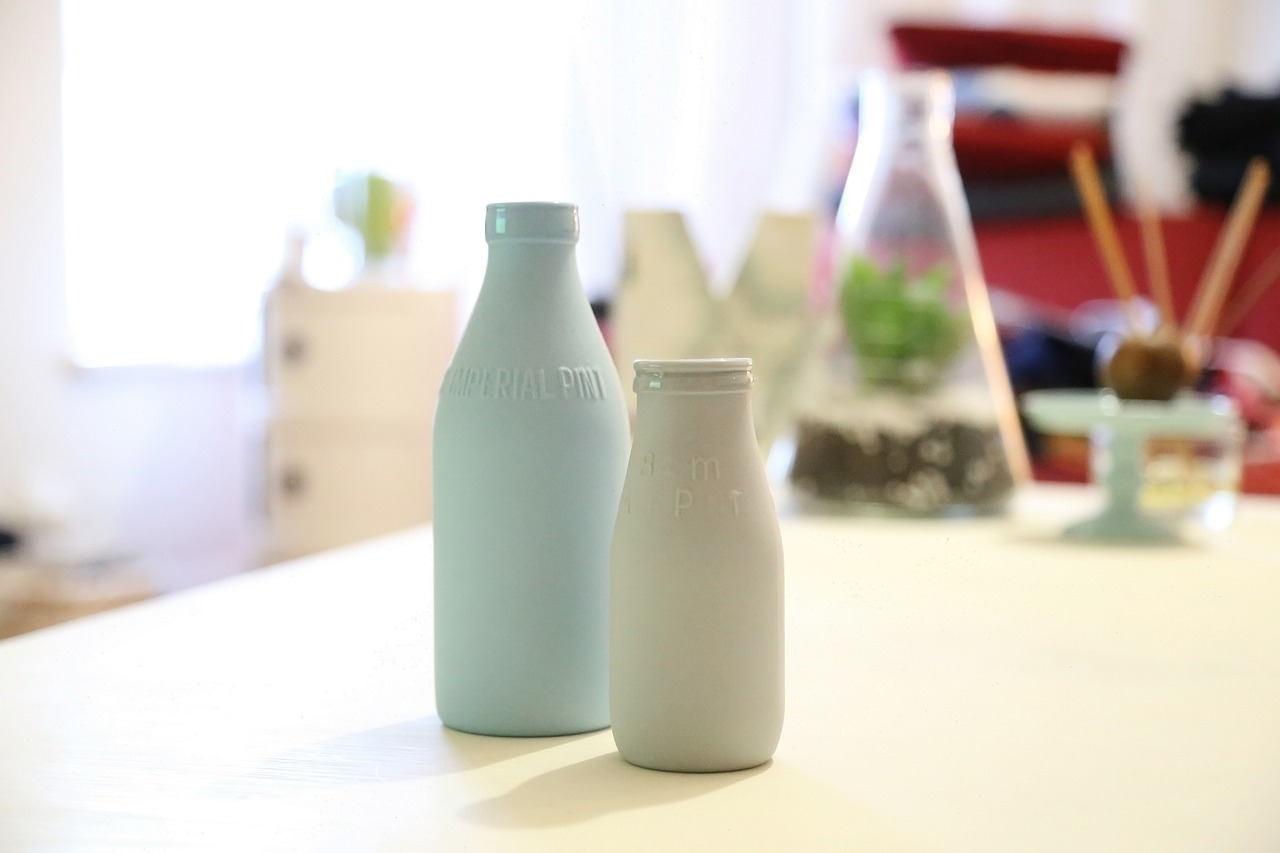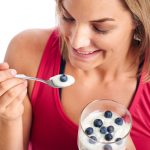More than 100 years ago, Élie Metchnikoff, a scientist, suggested that certain bacteria living inside the human body may be advantageous and work as a protection against sickness. Recently, there has been a surge of curiosity regarding the application of probiotics to enhance human wellbeing.
The phrase “probiotic” has been described as a “living microorganism that, when taken in sufficient quantities, imparts a healthful benefit for the consumer.” These organisms can typically be found in fermented products such as kimchi and sauerkraut, and in food items like yogurt and popsicles, as well as certain cosmetics.
Probiotics are often made up of two of the most usual types of bacteria, Lactobacillus and Bifidobacterium. The hypothesis of the gut–brain–skin axis, proposed eighty years ago, suggests that live microbes might be applicable in various ways, not only limited to the digestive system, but also potentially used in the treatment of dermatological conditions. There appears to be a connection between an imbalance of intestinal bacteria and long-term skin inflammation disorders. Therefore, the microbiome could be seen as a possible treatment approach.
Additionally, oral probiotics have direct immunomodulatory properties. There are advantages to oral probiotics on both the skin of healthier individuals and those with skin diseases. The results of their study suggest that taking probiotics orally may lessen skin sensitivity. There are some skin problems correlated to a bad bacterial ratio on the skin, and using topical probiotics can help regulate the bacteria of the skin.
Probiotics have been suggested as a possible treatment for atopic dermatitis, acne vulgaris, psoriasis, rosacea, and seborrheic dermatitis. Due to the unfavourable consequences associated with regular treatments for these problems, the near-absence of risks associated with probiotics makes them an advantageous alternative or additive remedy.
Despite this, probiotic formulations contain a range of different types of bacteria, each of which are tailored to specific skin conditions. In this article, we are taking a look at a variety of research on probiotics and analyzing how successful certain strains are in treating five skin ailments: atopic dermatitis, acne vulgaris, psoriasis, rosacea, and seborrheic dermatitis.
Some of the studies include probiotics taken with prebiotics. A prebiotic is a type of food component that cannot be broken down by the body. It stimulates the growth and maintenance of helpful bacteria in the large intestine, which in turn is beneficial for the overall health of the person. A synbiotic is created when a prebiotic and probiotic are combined together. Research into other alternatives includes “paraprobiotics” (also termed “postbiotics”), which are inactive probiotics.
LACTOBACILLUS
Lactobacilli are commensal bacteria of the human gut microflora. Microorganisms called lactic acid bacteria have been used for centuries in the manufacture of certain fermented foods in order to give them a unique flavor as well as to promote their preservation. It was noted that non-allergic children had higher levels of colonization of the digestive tract by lactobacilli than allergic children. This indicates that the correct colonization of bacteria in the gastrointestinal tract may reduce the probability of having atopic illnesses. Lactobacillus species were observed to be particularly effective in preventing the development of Staphylococcus aureus, which has been linked to worsening of the symptoms related to Alzheimer’s disease.
L. RHAMNOSUS/LGG
Lactobacillus rhamnosus is a bacterial strain that produces lactic acid and can be located in an array of environments, such as dairy items, the mouth, the intestines, and the female reproductive system. In 1983, Sherwood Gorbach and Barry Goldwin were able to obtain a specific strain of L. rhamnosus, known as Lactobacillus rhamnosus GG (LGG), from the gut of a healthy person, which is why it is given the abbreviated name “GG”.
Lactobacillus rhamnosus (LGG) is a probiotic strain that has been extensively studied for its usefulness in treating atopic dermatitis (AD), especially in babies. Research has suggested that using LGG with either newborns that are seen as high-risk or their mothers has the potential to stop or put off the appearance of AD in infants.
L. ACIDOPHILUS L-92
Chronic Allergic Rhinitis
Lactobacillus acidophilus L-92 is a type of bacterial species that is able to produce lactic acid and has numerous beneficial effects. It has been claimed that the paraprobiotic L-92 has proven to be beneficial in managing chronic allergic rhinitis. The swallowing of L. acidophilus L-92 by 50 Japanese kids resulted in significant improvement of their allergic reactions.
Atopic Dermatitis (AD)
An investigation involving 50 people diagnosed with AD who took L. acidophilus for a period of 24 weeks demonstrated that the L. acidophilus L-92 set experienced noteworthy reductions in IGA and SCORAD in comparison to the placebo group. Moreover, it was proposed that ongoing consumption of L. acidophilus had the effect of inhibiting scratching reactions and keeping the skin condition in a state of remission. The probiotic group had a large rise in transforming growth factor-Β and IL-12. This investigation proposed that L-92 hinders type-2-helper-T Cell-commanding irritation by sparking regulatory T cells and Type 1 helper T cells.
The researchers Gerasimov et al. looked into the consequences of administering L. acidophilus DDS-1, Bifidobacterium lactis UABLA-12, and fructo-oligosaccharides to children aged between 12 and 36 months who had moderate to severe atopic dermatitis (AD). The results indicated a noteworthy decrease in SCORAD index values in the group that had been given the probiotics. In general, L. acidophilus has possibilities, though much of the evidence is relatively scarce and mostly restricted to Asian countries.
Food Allergy
For a study that included 59 children from 6 months to 3 years of age who had a food allergy in addition, a particular group was given the L. acidophilus L-92 treatment for 24 weeks, which resulted in a substantial lessening in SCORAD. By contrast, the placebo group was not impacted similarly. No conspicuous contrast was detected between the two assemblages. Substantial reductions in serum TARC and total IgE levels appeared in the L. acidophilus group in comparison to the placebo group, signifying a decrease in skin inflammation.
The Study
A randomized, double-blind, placebo-controlled, crossover study was conducted to determine the outcome of taking the DDS-1 strain of lactobacillus for alleviating symptoms of lactose intolerance.
Background
Individuals suffering from lactose intolerance have difficulty breaking down and processing lactose following consumption, leading to symptoms like abdominal cramping, diarrhea, flatulence, vomiting and unusual bowel noises. This species of bacteria, known as Lactobacillus acidophilus, is celebrated for its ability to break down sugar. Research in laboratory settings has indicated that consuming Lactobacillus acidophilus may help to process lactose, though there has been no research involving humans to see if it can help treat lactose intolerance symptoms.
Objective
This study aimed to determine how effective a particular kind of Lactobacillus acidophilus is in relieving the discomforts linked to lactose intolerance. It was designed to be randomized, double-blind, placebo-controlled and a crossover.
Methods
The investigation brought in wellness promoters who were between 18 and 75 in age, and who had issues with lactose sensitivity. An evaluation involving a lactose challenge was conducted to determine if applicants fulfilled the criteria of being eligible; that was if they received a score of 10 or more on their self-assessment of the symptoms related to the challenge such as diarrhea, stomach ache, vomiting, loud gut sounds, passing of gas, and any other overall symptoms. In this experiment, volunteers were divided into two groups. Each group underwent 4 weeks of treatment with either the active or placebo product, with a 2-week break before switching. An investigation was done using the DDS-1 variety of Lactobacillus acidophilus that came from Nebraska Cultures in Walnut Creek, California. The placebo was formulated from maltodextrin. The individuals involved in the study were told to consume the product once per day for a period of 4 weeks. Information garnered included evaluations of signs correlating to lactose intolerance.
Results
A total of 126 people took part in the screening, resulting in 38 being selected to take either the study product or a placebo. 18 of the 38 were assigned to the product group, and 20 to the placebo group. A total of fifteen individuals (seven within the experimental group and nine in the control group) ended the test prematurely due to relocation, not being contactable, or making the decision to forfeit participation. From these participants who withdrew early, one individual finished the active part of the experiment and the other two completed the placebo part. No subject withdrawals were related to adverse events. A total of 22 people finished both phases of the research, and were part of the final evaluation. This included 11 people who got the active product on their second visit and 11 who got the placebo on their second visit. The number of people in the active group and placebo group analyzed for within-group analysis was 23 and 24 respectively.
The placebo group was analyzed independently, and after four weeks, it was observed that abdominal cramping (1.04 at beginning and 2.33 at end, p = 0.004) and total symptom score (4.79 initially and 9.71 at hour 6, p = 0.017) both had a statistically significant improvement. During the given period, the product group experienced an impressive improvement in overall symptom score (starting at 3.86 and going up to 8.23, p = 0.027) along with a noteworthy rise in flatulence (going from 1.30 at the beginning to 3.26 at the end, p = 0.027).
The linear mixed model showed a statistically relevant difference of the diarrhea symptom score, abdominal cramping, vomiting, and overall figures between the two groups at week 4. Specifically, the DDS-1 group had 1.34 for the diarrhea symptom score, 1.94 for abdominal cramping, 0.08 for vomiting, and 9.28 for overall, whereas the placebo group had 1.69, 2.39, 0.36, and 10.51 respectively (p = 0.033, p = 0.012, p = 0.002, and p = 0.037 respectively).
There were no notable differences seen among the Bowel Sounds and Flatulence symptom ratings for the DDS-1 and placebo groups over the entire time period of the study. No notable distinctions between the groups were found in relation to the HBT, the type of stool as logged in the Bristol Stool Scale, and the SF-12 quality of life survey after the completion of the study. Despite the collection of stool samples, the analysis of them was not carried out because of financial restrictions and the upbeat findings based on 6-hour symptom assessments.
Discussion
This research evaluated how effective the DDS-1 study product is in reducing symptoms of lactose intolerance when compared to the effects of a placebo. The purpose of this research was to include people who suffered from the symptoms of being lactose intolerant such as diarrhea, abdominal discomfort, throwing up, noisy stomach noises, and passing gas. A study that went on for a while showed that individuals in the group who were given a placebo had worse lactose intolerance symptoms after four weeks than those in the group given the DDS-1 strain of Lactobacillus acidophilus. No statistically relevant results were seen when data was collected relating to HBT, stool form, and the SF-12 quality of life survey. In order to be concise, these results were not included in the report.
The use of probiotics in treating lactose maldigestion has been supported by both anecdotal stories and scientific studies concerning the eating of yogurt containing bacteria cultures. Research has indicated that cultured yogurt has high levels of enzyme reaction likely from the enzymes produced by the probiotics Lactobacillus acidophilus, Lactobacillus bulgaricus, and Streptococcus thermophilus. A clinical study on 10 people who do not produce lactase found that the intake of 18 g of lactose in yogurt triggered a significantly decreased amount of hydrogen excretion than the same amount of lactose in milk, thus suggesting that lactose in yogurt is better absorbed. It was found that those who ate yogurt had fewer instances of diarrhea or passing gas. It is thought that the bacterial lactase is better than the artificial lactase enzyme because its cells protect it from the acidic environment in the stomach. Upon reaching the small intestine, the yogurt is digested by the action of lactase, which works effectively due to the slower pace at which food passes through this part of the digestive tract. It is assumed that bile breaks down the membrane of bacteria, allowing lactase to be released in the gut. The amount of active enzyme in yogurt is affected by the microorganisms’ capability of withstanding the acidity of the stomach and the impact of bile in stimulating the release of beta-galactosidase from the microbes. Pasteurization is also thought to reduce lactose auto-digestion capacity.
This research initializes support that the DDS-1 variety of Lactobacillus acidophilus can keep present in the gastrointestinal area after taking it for a continuous period of 4 weeks and likely bring relief to those who take it compared to those taking only a placebo. This research did not calculate how many people actually had an inability to digest lactose. Therefore, not every individual who thinks they cannot digest lactose accurately is necessarily an authentic maldigester.
Conclusions
This current analysis has elucidated that the particular DDS-1 strain of Lactobacillus acidophilus made by Nebraska Cultures is fine to have and decreases abdominal symptom scores related to diarrhea, stomach cramps, and vomiting during a lactose challenge as compared to a placebo.









